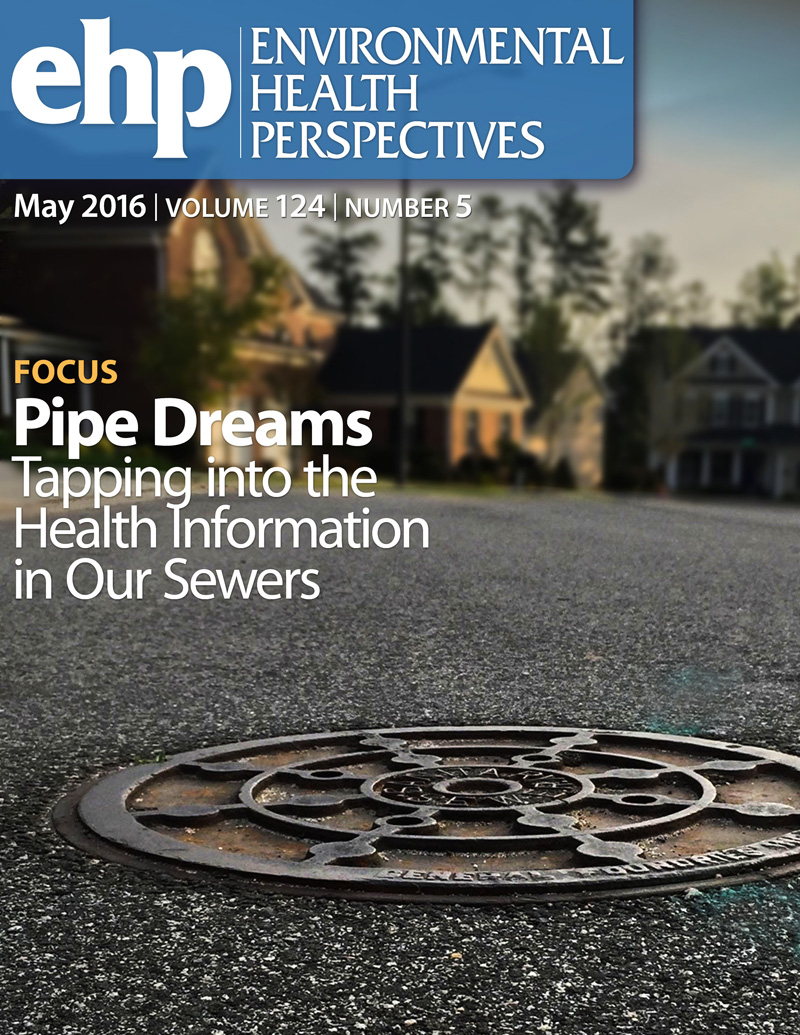评估围产期暴露于 BPSIP 对雌性和雄性后代 ICR 小鼠肝脏胆固醇代谢的影响。
IF 10.1
1区 环境科学与生态学
Q1 ENVIRONMENTAL SCIENCES
引用次数: 0
摘要
背景在各种人体生物样本中发现了大量可替代双酚 S(BPS)的双酚 S 衍生物,其中包括在人体脐带血浆和母乳中检测到的 4-hydroxyphenyl 4-isoproxyphenylsulfone (BPSIP)。我们的研究旨在调查暴露于 BPSIP 的母鼠的后代肝脏胆固醇代谢在性别上的反应。方法从妊娠第一天开始,通过饮用水将 5μg/kg 体重(BW)/天的 BPSIP、BPS 或 E2 暴露于妊娠期 ICR 小鼠,直到幼鼠断奶。幼鼠血浆和肝脏中的 BPSIP、BPS 或 E2 浓度是通过液相色谱-串联质谱法测定的。记录代谢表型,组织病理学检查肝脏受损情况。转录组分析用于描述不同性别间差异表达基因的分布和表达模式。代谢调节通过定量实时 PCR、免疫组织化学和免疫印迹进行了验证。结果与对照组相比,暴露于 BPSIP 的母鼠的幼崽血清胆固醇水平较高,肝脏胆固醇水平雌性较高,雄性较低。雄性肝脏中的 BPSIP 浓度为 1.22±0.25 纳克/克,雌性肝脏中的 BPSIP 浓度为 0.69±0.27 纳克/克。组织病理学分析表明,雄性和雌性后代均出现脂肪变性和脂质沉积。转录组和基因表达分析发现,暴露于 BPSIP 的母鼠和对照组的幼鼠在胆固醇生物合成、吸收、处置和外流方面存在性别差异。体内染色质免疫沉淀分析表明,与对照组相比,暴露于 BPSIP 的雌性幼鼠体内 ERα 蛋白与 Hmgcr、Pcsk9 和 Abcg5 等关键基因的结合减弱,而雄性幼鼠体内 ERα 蛋白与 Hmgcr、Pcsk9 和 Abcg5 等关键基因的结合增强。在体外,肝脏类器官实验表明,只有在联合使用ERα激动剂和ERβ激动剂的情况下,BPSIP诱导的Hmgcr、Ldlr和Cyp7a1等关键基因的差异表达才能恢复到与对照组相当的水平。因此,必须对 BPS 衍生物进行系统评估,以保护孕期孕产妇健康,防止代谢紊乱代代相传。https://doi.org/10.1289/EHP14643。本文章由计算机程序翻译,如有差异,请以英文原文为准。
Evaluating the Effects of Perinatal Exposures to BPSIP on Hepatic Cholesterol Metabolism in Female and Male Offspring ICR Mice.
BACKGROUND
A broad suite of bisphenol S (BPS) derivatives as alternatives for BPS have been identified in various human biological samples, including 4-hydroxyphenyl 4-isopropoxyphenylsulfone (BPSIP) detected in human umbilical cord plasma and breast milk. However, very little is known about the health outcomes of prenatal BPS derivative exposure to offspring.
OBJECTIVES
Our study aimed to investigate the response of hepatic cholesterol metabolism by sex in offspring of dams exposed to BPSIP.
METHODS
Pregnant ICR mice were exposed to 5μg/kg body weight (BW)/day of BPSIP, BPS, or E2 through drinking water from gestational day one until the pups were weaned. The concentration of BPSIP, BPS, or E2 in the plasma and liver of pups was determined by liquid chromatography-tandem mass spectrometry. Metabolic phenotypes were recorded, and histopathology was examined for liver impairment. Transcriptome analysis was employed to characterize the distribution and expression patterns of differentially expressed genes across sexes. The metabolic regulation was validated by quantitative real-time PCR, immunohistochemistry, and immunoblotting. The role of estrogen receptors (ERs) in mediating sex-dependent effects was investigated using animal models and liver organoids.
RESULTS
Pups of dams exposed to BPSIP showed a higher serum cholesterol level, and liver cholesterol levels were higher in females and lower in males than in the controls. BPSIP concentration in the male liver was 1.22±0.25 ng/g and 0.69±0.27 ng/g in the female liver. Histopathology analysis showed steatosis and lipid deposition in both male and female offspring. Transcriptome and gene expression analyses identified sex-specific differences in cholesterol biosynthesis, absorption, disposal, and efflux between pups of dams exposed to BPSIP and those in controls. In vivo, chromatin immunoprecipitation analysis revealed that the binding of ERα protein to key genes such as Hmgcr, Pcsk9, and Abcg5 was attenuated in BPSIP-exposed females compared to controls, while it was enhanced in males. In vitro, the liver organoid experiments demonstrated that restoration of differential expression induced by BPSIP in key genes, such as Hmgcr, Ldlr, and Cyp7a1, to levels comparable to the controls was only achieved when treated with a combination of ERα agonist and ERβ agonist.
DISCUSSION
Findings from this study suggest that perinatal exposure to BPSIP disrupted cholesterol metabolism in a sex-specific manner in a mouse model, in which ERα played a crucial role both in vivo and in vitro. Therefore, it is crucial to systematically evaluate BPS derivatives to protect maternal health during pregnancy and prevent the transmission of metabolic disorders across generations. https://doi.org/10.1289/EHP14643.
求助全文
通过发布文献求助,成功后即可免费获取论文全文。
去求助
来源期刊

Environmental Health Perspectives
环境科学-公共卫生、环境卫生与职业卫生
CiteScore
14.40
自引率
2.90%
发文量
388
审稿时长
6 months
期刊介绍:
Environmental Health Perspectives (EHP) is a monthly peer-reviewed journal supported by the National Institute of Environmental Health Sciences, part of the National Institutes of Health under the U.S. Department of Health and Human Services. Its mission is to facilitate discussions on the connections between the environment and human health by publishing top-notch research and news. EHP ranks third in Public, Environmental, and Occupational Health, fourth in Toxicology, and fifth in Environmental Sciences.
 求助内容:
求助内容: 应助结果提醒方式:
应助结果提醒方式:


